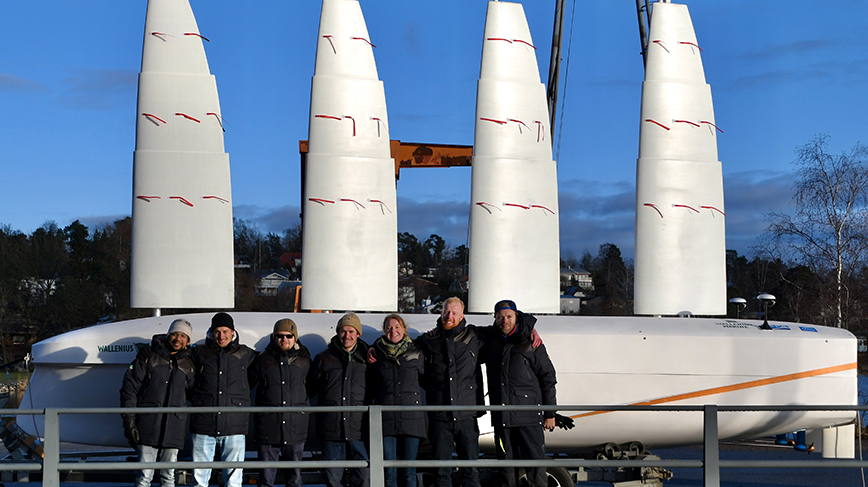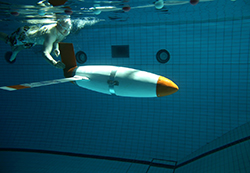Student project contributes to future of ocean cargo shipping

A 200-metre long ocean cargo ship powered by wind is being developed in the Centre for Naval Architecture, part of the School of Engineering Sciences at KTH. The project is a collaboration with Wallenius Marine and SSPA, which aims to replace engines with 100-metre high vertical wings that would cut emissions by 90 percent.

Along for this unique voyage is Lukas Blau, a master’s student from Germany who is in his second year in the Naval Architecture master’s programme .
How are you involved in the project?
LB: KTH has taken on the challenge to investigate the flow conditions around the wings, work on optimized routing to meet ideal wind conditions and to develop a 7-metre-long (scale 1:30) model of the big vessel for research purposes. Students in the course, Naval Design, were presented an opportunity to develop the model and we have recently taken her out for her the maiden voyage.
Tell me about your role.
LB: We are sharing most of the work in the team. However, each of us has a focus area. For me that is the transverse stability, which means I look into how stable the vessel is against heeling, or leaning to the side as a result of the force of wind. I am working on solutions to prevent excessive movements of this kind. I’m also working on the strength calculations of the hull for weight optimization.
What is the most challenging part of the work?
LB: On the technical side we decided, for the comfort of the crew, to limit the heeling of the vessel quite drastically. The way to do this is to lower the center of gravity as much as possible, meaning that lightweight design was a crucial objective in every aspect of the system. The rigs were especially problematic, since they are located extremely high in the structure. In typical university courses students don’t have to decide the best method to reach the goal, but this project is different. We have to evaluate each solution not only in terms of solving the technical problem; we also have look at factors such as cost, appearance, production methods and delivery times. That makes it much more complicated.
How does it feel to be part of this?
LB: It’s a great honor. As engineers, we will have to take on the challenge of making sustainable living possible. In the Oceanbird project sustainability is the major focus, and instead of optimizing an existing design it has been decided to take the courageous step of proposing sailing as a modern means for transportation of goods. That is very innovative and I think we need many more of these kinds of extreme proposals.
Any advice for students interested in enrolling in your master’s program?
LB: Do it. It is a lot of fun. Amongst the courses at KTH there are some that are outstandingly good and can provide you with skills for your toolbox as an engineer. I would recommend every new student to get in contact with more senior students as fast as you can to get feedback regarding these courses and implement them into the planning for your masters.
David Callahan
Related article:
Wind-powered cargo ship model sails in Stockholm

